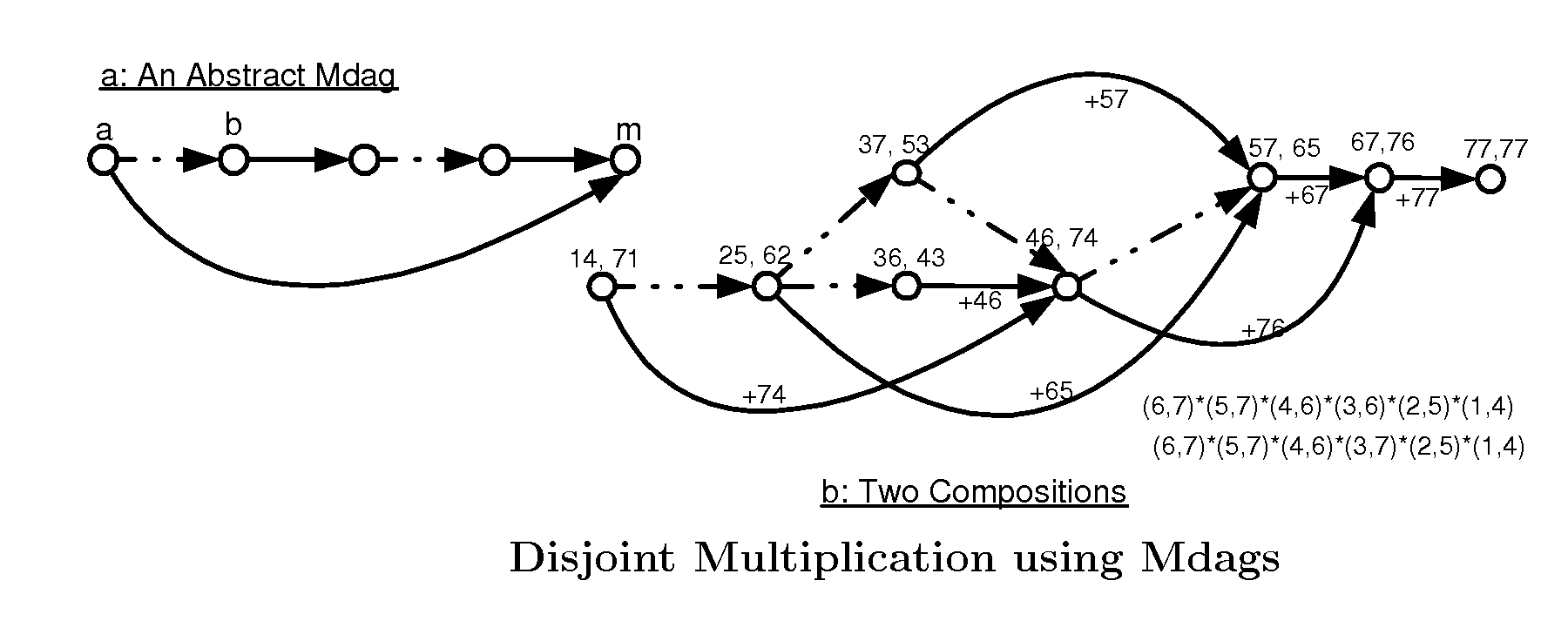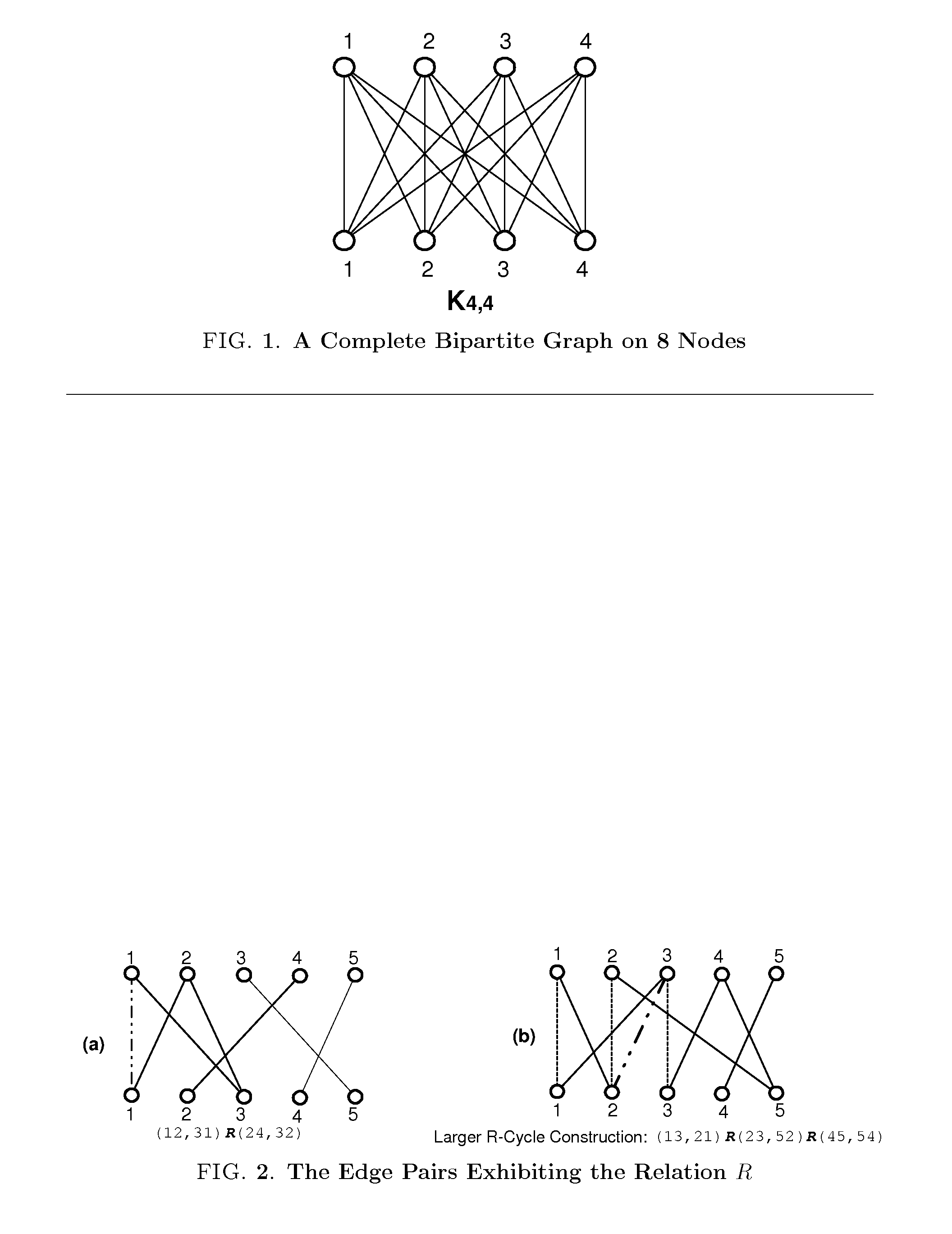Technique for solving np-hard problems using polynomial sequential time and polylogarithmic parallel time
a technology of applied in the field of solving np-hard problems using polynomial sequential time and polylogarithmic parallel time, can solve the problems of preventing the finding of optimal solutions, and affecting the accuracy of the solution
- Summary
- Abstract
- Description
- Claims
- Application Information
AI Technical Summary
Problems solved by technology
Method used
Image
Examples
Embodiment Construction
3.1. Theory of Operation
[0035]The core component of this Solution Generating system is a generating graph which is the foundation for allowing search and counting of all NP-complete and many NP-hard problems in polynomial sequential time and polylogarithmic parallel time. It is based on the concept of a generating set in Permutation Group theory, allowing all the perfect matchings in a bipartite graph to be enumerated in polynomial time. We first present the associated concepts and the construction of a generating graph.
3.2. Perfect Matchings & the Permutation Group
[0036]Let G be a permutation group on n! permutations of the set Ω={1, 2, . . . , n}. Within the scope of the perfect matching problem we will assume the permutation group G=Sn. Let Π be a subgroup of G, denoted as Π
G=⊎ri-1H·gi(3.1)
The elements in the se...
PUM
 Login to View More
Login to View More Abstract
Description
Claims
Application Information
 Login to View More
Login to View More - R&D
- Intellectual Property
- Life Sciences
- Materials
- Tech Scout
- Unparalleled Data Quality
- Higher Quality Content
- 60% Fewer Hallucinations
Browse by: Latest US Patents, China's latest patents, Technical Efficacy Thesaurus, Application Domain, Technology Topic, Popular Technical Reports.
© 2025 PatSnap. All rights reserved.Legal|Privacy policy|Modern Slavery Act Transparency Statement|Sitemap|About US| Contact US: help@patsnap.com



